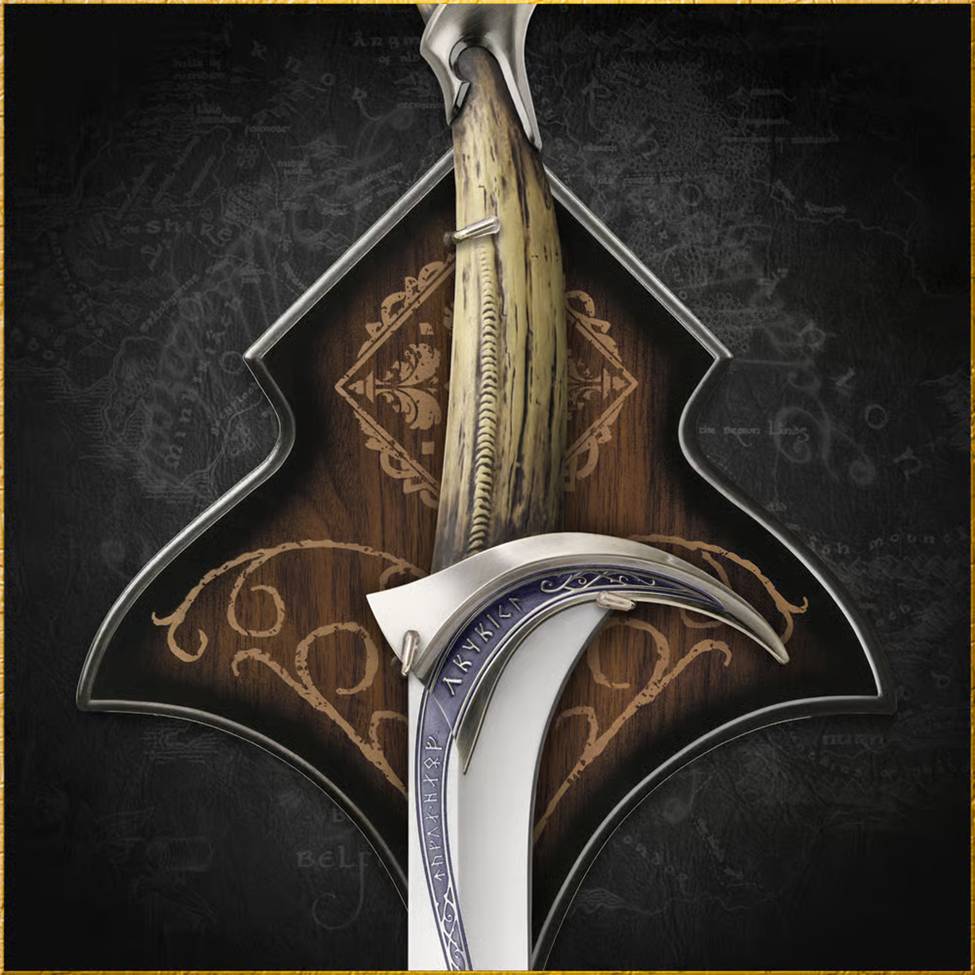Orcrist: The Goblin-Cleaver from The Hobbit Films


Among the legendary weapons of Middle-earth, few hold the same mythical allure as Orcrist, the fabled Goblin-Cleaver. Introduced in J.R.R. Tolkien’s classic The Hobbit, Orcrist is more than just a blade, it is a symbol of ancient elven might, dwarven pride, and cinematic brilliance in Peter Jackson’s adaptation of the tale. Unlike many weapons from Tolkien’s legendarium, Orcrist has a uniquely personal narrative that bridges the racial divides of elves and dwarves, infusing its story with rich emotion and powerful symbolism. When Thorin Oakenshield discovers the blade early in The Hobbit, readers and viewers alike witness the rebirth of a relic once wielded by elven lords of Gondolin. What makes Orcrist especially captivating to fans and sword collectors is not just its lethal reputation or storied past, but also its breathtaking portrayal in the films—crafted with such finesse that it instantly stands apart from other Middle-earth replicas and swords in the Hobbit.
Ancient Origins, From Gondolin to Goblin-Town
Orcrist's origin traces back to the hidden elven city of Gondolin, a place of unmatched craftsmanship and power in the First Age. Forged before the city’s tragic fall, Orcrist was one of several legendary blades that glowed blue in the presence of orcs. Its name in Sindarin, Orcrist, literally translates to “Goblin-Cleaver,” and it was feared among goblins who gave it the grim nickname Biter. Tolkien’s text describes it as a sword of elven make, accompanied by runes inscribed along its blade, and later identified by Elrond during the dwarves’ visit to Rivendell. The elven lord explains to Thorin that Orcrist had once slain hundreds of goblins and had been revered among the fair folk of old. Peter Jackson’s film adaptation remains largely faithful to this history while adding cinematic flair. He chose to define the swords in the Hobbit as more than weapons, they are a statement. For Orcrist, Its curved design, gleaming steel, and exotic hilt—crafted to resemble a dragon’s tooth—infuses it with a mythical gravitas that appeals both to lore-purists and fantasy enthusiasts.
A Sword of Legacy – and Fear
In both the book and the film, Orcrist shares a magical property with other swords in The Hobbit. Like Glamdring and Sting, it glows in the presence of orcs. But Orcrist’s glow is more than a warning signal. For goblins, the blade’s light is a beacon of doom, a terrifying reminder of their historical defeats. In the Misty Mountains, goblins instantly recognize the blade and react with fury and fear, referring to it as Biter, a name that underscores their deep hatred of the sword and whoever wields it.
Thorin Oakenshield and Orcrist’s Final Journey
Thorin’s relationship with Orcrist is one of reverence and pride. A dwarf wielding an elven weapon might seem ironic, given the long-standing tension between the two races, but in Thorin’s case, it serves as a symbol of unification and strength. In the films, Orcrist is treated with cinematic majesty. Whether being unsheathed in the troll cave or blazing through foes during battle, the sword commands attention. The filmmakers emphasize its elegance and lethality, making it a signature part of Thorin’s character arc. The most poetic moment comes after Thorin’s death in the Battle of the Five Armies. Though taken from him earlier during his imprisonment by the Wood-elves, the sword is laid upon his tomb as a symbol of honor and protection.
A Favorite Among Collectors and Enthusiasts
Fans and collectors of Tolkien-inspired weaponry often place Orcrist high on their lists—not just for its history, but for its visual uniqueness. While Glamdring and Sting are beloved in their own right, Orcrist’s design in the films breaks away from standard Western sword shapes. Its slightly curved blade, ornate hilt, and dragon-tooth motif distinguish it from typical medieval-style weapons, giving it a flair that resonates with fantasy fans. Collectors praise the attention to detail in Orcrist replicas, especially those officially licensed by Weta Workshop. The runes etched into the blade, the layered metallic finish, and the elven inscriptions combine to create a weapon that feels both ancient and refined. Unlike other swords, The Hobbit’s Orcrist strikes a balance between ferocity and elegance, making it visually dramatic yet historically grounded in Tolkien’s lore. The story behind the sword adds to its allure: A blade once wielded by elves, lost for ages, and then claimed by a dwarf prince who redeems his people’s honor.
A Legendary Blade for the Ages
Orcrist may not be the most frequently mentioned weapon in Tolkien’s broader legendarium, but it carries a legacy that bridges the First and Third Ages. It is both an artifact of destruction and a relic of honor, linking elves and dwarves, history and future, war and peace. Its cinematic portrayal only deepens its impact, as all of the swords in The Hobbit films. For those who admire Tolkien’s world, Orcrist stands as a reminder that even in tales of dragons, goblins, and gold, there are deeper themes at play—loyalty, legacy, and the bonds that transcend enmity. And for collectors and fantasy weapon enthusiasts, Orcrist remains a crown jewel: a blade with a story, a soul, and a shimmer that refuses to fade. Take a look at our swords from the Hobbit (and Lord of the Rings) in our collections right here on True Swords!














































